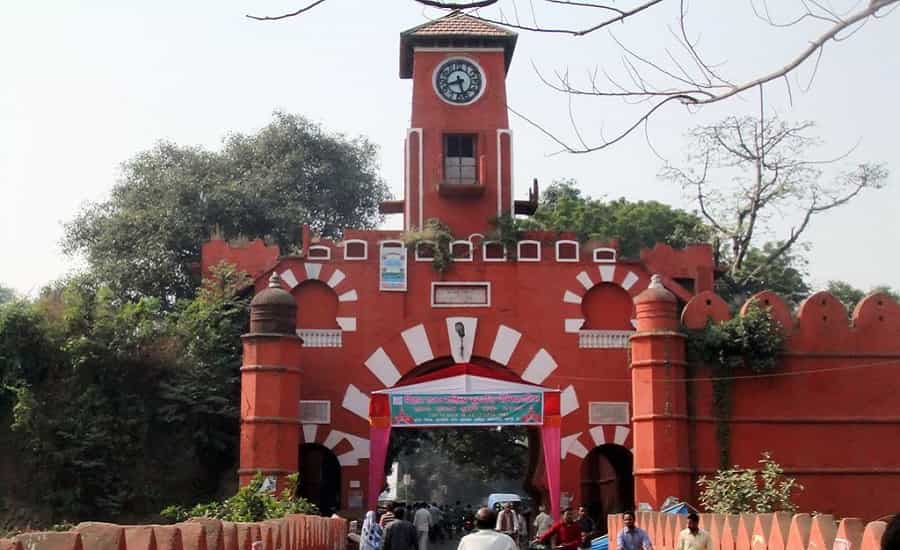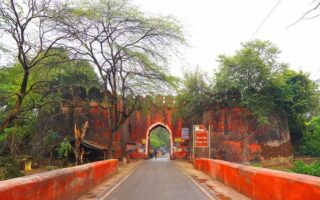India is home to some of the most ancient, mysterious, and appealing forts that were built in an age when the construction practices were very different from what we follow today. Still, the foundation of these structures and the efforts that went in the overall process are evident from the fact that after so many years of construction, these structures are still intact with minor damages. Munger Fort in the state of Bihar is a prominent name in the list of such ancient forts that continue to exist and depict the excellence of the architects of the royal times.

Location
The Fort of Munger is located in the town of Munger. Built above a small hill, the Fort oversees the Ganges River.
History
The actual period of the construction of Munger Fort has not yet been ascertained. Historians state that the fort must have been constructed somewhere around 1330, when the Munger town was reigned by Muhammad Bin Tughluq. Prior to Tughluq, the town was been ruled by the Maurya Dynasty, followed by its inclusion in the Kingdom of Anga. It was taken over by the rulers of Pala Dynasty during the 9th century.
Bhaktiyar Khilji took over the town in 1225 from the Mithila Dynasty. The Sultan of Bengal ruled over Munger for around two decades, before it was added to the State of Delhi in 1342 by Tughluq.
In the early fifteenth century, a renovation work was carried out in the fort, which is revealed by the inscriptions when it was under the control of Prince Danyal. The shrine of Shah Nafah was also built during this period.
Sher Shah Suri ruled over the fort after he defeated Ibrahim Khan in the battle of Surajgarha in 1534. Humayun, a Mughal emperor, tried to conquer the fort and establish his kingdom in Munger, but his army lost to the Afghani army, resulting in the establishment of the Afghani Kingdom.
The fort was designated as the Bihar Army’s Headquarter in 1590 by The Gaur Dynasty.
During the sixteenth century, a minister of the Mughal Dynasty was sent to Munger to launch an attack against the army of Bengal. During his visit, he stayed at the fort and decided to renovate its fortifications and later the fort and the town was conquered by the Mughal emperors. In the following years, a palace was added to the fort by Shah Jahan’s son Shah Shuja.
For a brief period of time, beginning from 1745, the fort was ruled by a rebel leader named Mustafa Khan, who left the fort within a few days while almost emptying the stock of arms and ammunitions to continue his quest for conquering Patna.
During the seventeenth century, the fort was conquered by the Nawab of Bengal, Mir Qasim Ali, who made the town his administrative head quarters in 1763. A facility was established to manufacture fire-arms to fulfill the requirements that could arise at the time of attacks by the enemies. New fortifications and palaces were added to the fort during this period. Mir Qasim was opposed by the British due to the differences arising between both the parties regarding the administrative and trade policies. He lost the control of the fort to the British army in 1764, following which he started exploiting his own people and also committed severe crimes in Munger and Patna.
The fort was taken over by the Britishers, who used it for a couple of years before abandoning it. A small number of soldiers were employed at the fort. However, no efforts were taken to maintain it.
- Also Read: Popular Forts and Places in Bihar
Structure
Built primarily out of lime mortar and granite stones, the fort is a large structure with huge gates. One of the gates is surrounded by a 175 feet wide moat, which gives the impression of it being a fortification. With four feet thick walls inside and 12 feet thick walls outside and being surrounded by the River Ganges made the fort a secure place for the inhabitants.
Places to Visit near Munger Fort
Inside the fort, there are many monuments of importance. You must see the following monuments during your visit:
Pir Shah Nufa’s Tomb
Pir Shah Nufa, a disciple of Khwaja Moinuddin Chisti, arrived at the fort following his instructions. Nufa’s tomb is located near the south entrance, adjacent to a rampart, covering approximately 100 feet.
Shah Shuja’s Palace
Though named after the son of Shah Jahan, this palace is said to be built by Nawab Mir Qasim. The palace consists of a female chamber, audience hall and a warehouse for storing arms and ammunition. A mosque, now in ruins, was built towards the west. Beneath the floor of the mosque, there was a pit, approximately 12 feet deep, from where a number of tunnels run towards different directions. Probably used as a route to flee during enemy attacks, these wells were later shored up.
Kashtaharini Ghat on the Ganges
This ghat was constructed on a land which was donated by Govind Chandra, an emperor of the Gahadvala Dynasty. Various antiques were found during the excavations carried out at this site.
Chandisthana
Chandisthana translates to the place of Chandi, a Hindu Goddess. Considered a Shakti Peeth, this site is believed to be a part of an ancient temple, a topic of debate till date.
Karnachaura
This site is the highest point in the whole fort and offers a panoramic view of the surrounding area.
Bihar School of Yoga
This school was established in 1964 as a centre of research and yoga learning. Designated as the first yoga university in the world, this institute attracts students from different parts of the world.
Eat, Drink, Collect
A lot of restaurants in the town ensure that the tourists are able to enjoy the local delicacies without traveling much to find a place to eat. One must try puri sabzi, jalebis, rasgullas, litti chokha and murga bhaat during his/her trip.
Normal alcoholic and non-alcoholic beverages are available across the town.
The hotels in the town offer lodging and meals to the tourists at a reasonable price.
How to Reach
The closest airport to the town of Munger is located in Patna. At a distance of approximately 170 kilometres, this airport serves as a connecting link between the Munger and other major cities of India.
The railway station at Munger and the adjoining cities connect this historical town to many other parts of India through the rail network.
As the town is located on the banks of River Ganges, it can be approached through the waterway on a cruise boat operated by the Inland Waterways Authority of India.
Tourists can also board a bus from the adjoining city or hire a private car to reach to the town of Munger.

